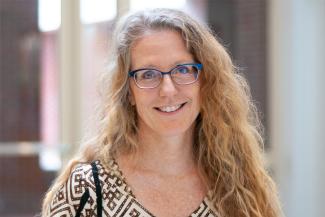Debra Ann Fadool

Contact Information
Interest
Olfactory Signal Transduction and Neuromodulation of Ion Channels.
Current Research
The Debi Fadool Laboratory has discovered that hormones and neurotrophins [glucagon-like peptide 1 (glp-1), insulin, and brain-derived neurotrophic factor (BDNF)] modulate electrical activity in the brain at the level of the ion channel via phosphorylation. These types of signaling molecules are also involved in maintaining energy homeostasis. Currently, they hypothesize that the olfactory system not only senses our external chemical environment (odors) but is a detector of internal chemistry, the chemistry of metabolism. As such, they are studying the neuropathology of diabetes and obesity - how sensory systems, such as the olfactory system are perturbed by diet-induced obesity at the level of the ion channel using electrophysiology, nanotechnology, and optogenetics. Debra Ann Fadool also serves as the director of the NIH Chemical Senses Training Grant, which predoctoral students and postdoctoral scholars can read about special training opportunities.

